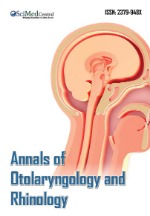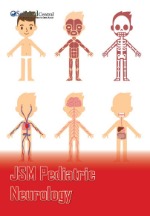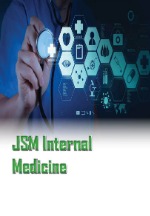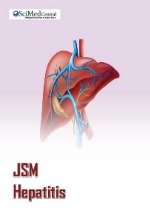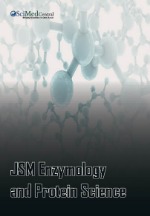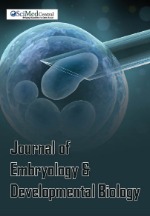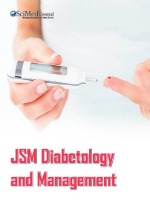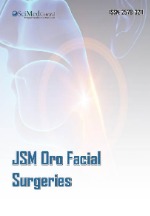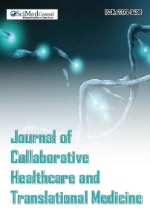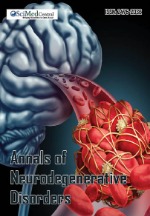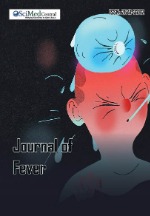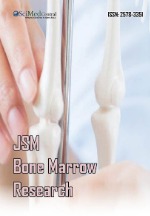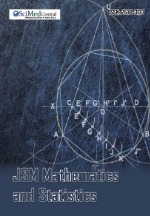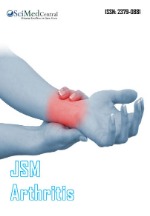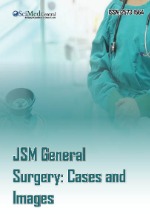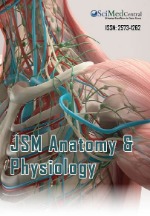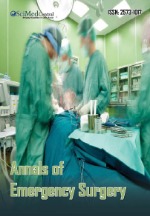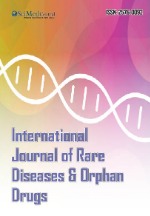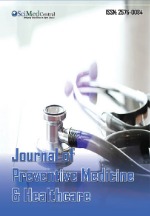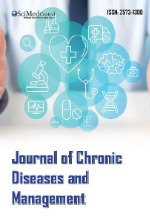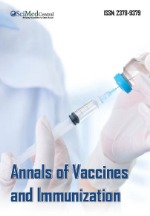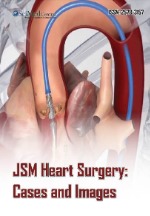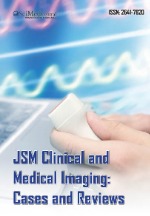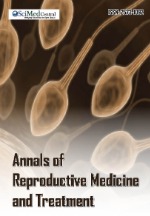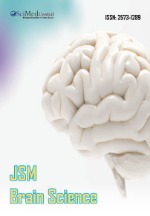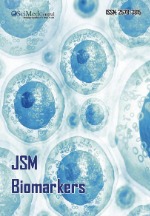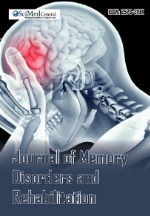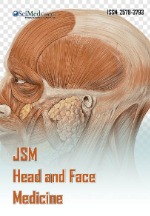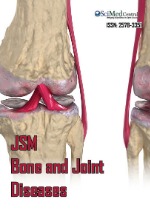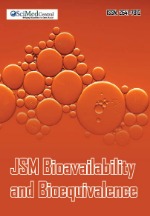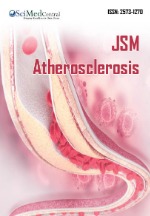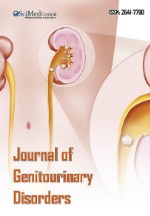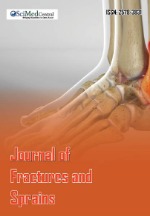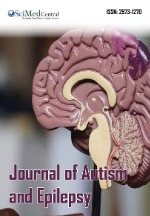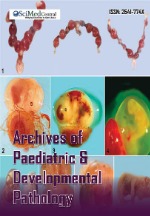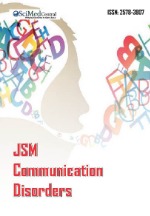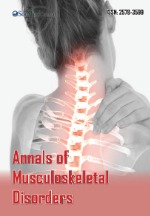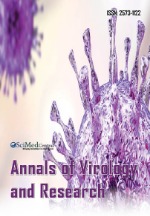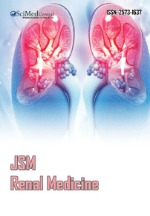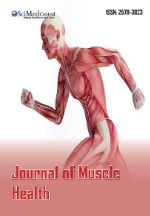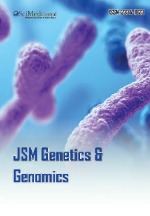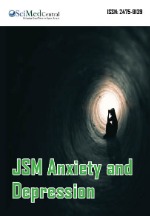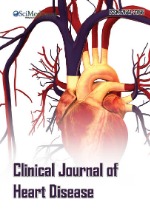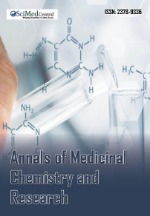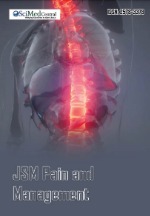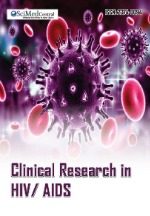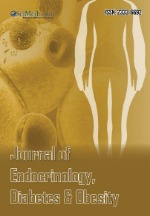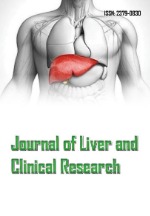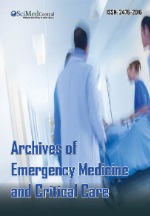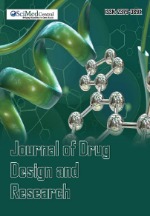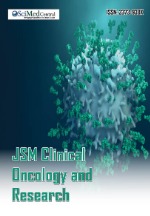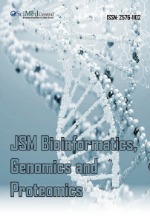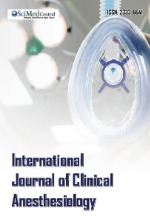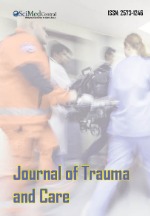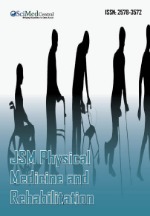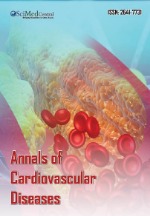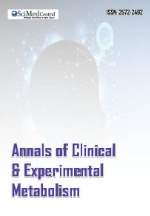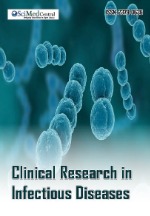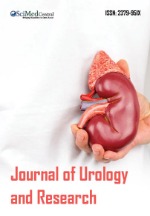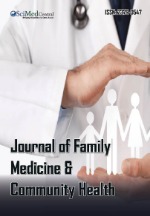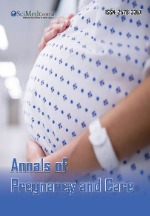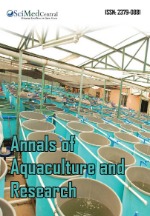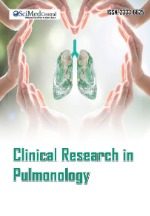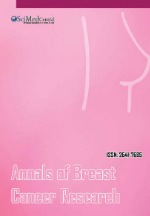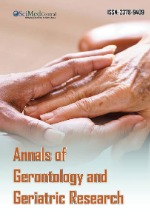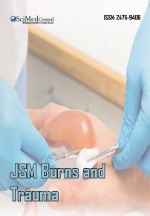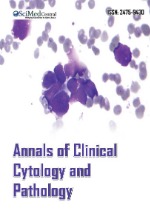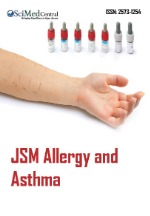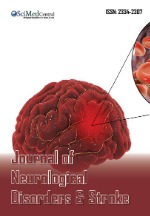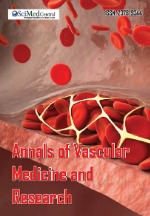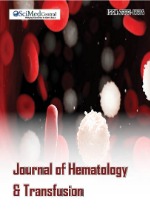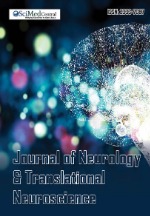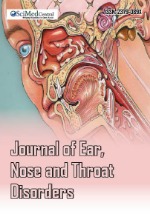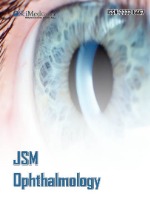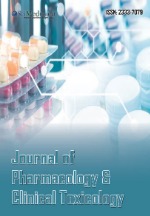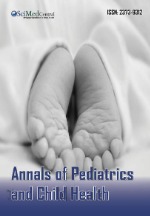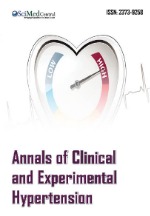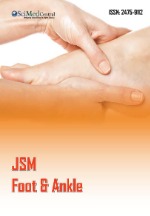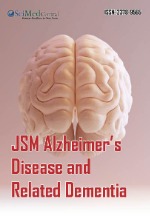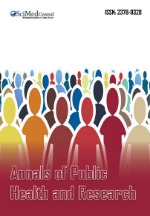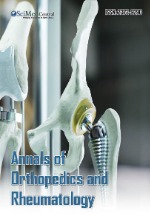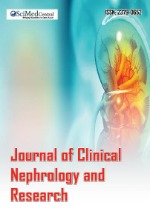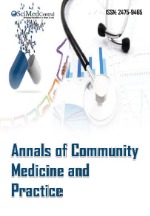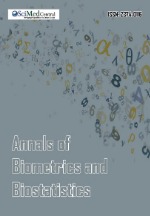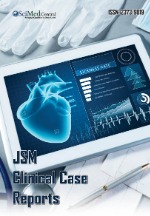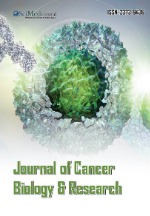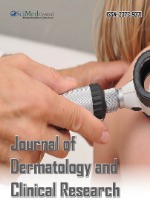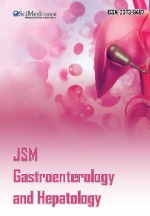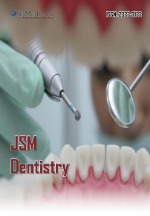Assessment of Hospitalizations due to Cardiovascular Events in Patients with Atherosclerotic Cardiovascular Disease with and Without Type 2 Diabetes Based on Representative Health Claims Data in Germany
- 1. Department of Internal Medicine I, University Hospital Aachen, RWTH Aachen University, Germany
- 2. WIG2 – Scientific Institute for Health Economics and Health System Research, Germany
- 3. Imperial Centre for Cardiovascular Disease Prevention, School of Public Health, Imperial College London, UK
- 4. Faculty of Economics and Management Science, University Leipzig, Germany
Abstract
Objective: Using health claims data of approximately 3.4 million patients, we assessed cumulative incidence of hospitalization for heart failure (HF), myocardial infarction, stroke, and peripheral arterial disease (PAD) in subgroups with atherosclerotic cardiovascular disease (ASCVD) and with or without type 2 diabetes (T2DM) in Germany.
Methods: We selected two subgroups with background statin therapy: (1) patients with ASCVD and T2DM; (2) patients with ASCVD without T2DM. The cumulative incidence of specified hospitalizations was estimated using Kaplan-Meier. Results: In 2018, cumulative incidence of hospitalization for HF is 2.9% in patients with ASCVD+T2DM and 1.5% in patients with ASCVD-T2DM. Cumulative incidence of PAD-related hospitalization is 2.3% and 1.4%, respectively. There were slight differences among ASCVD+T2DM and ASCVD-T2DM in cumulative incidence of myocardial infarction (1.41% and 1.16%, respectively) and stroke (1.64% and 1.27%, respectively).
Conclusions: Diabetes amplifies incidence of HF and PAD hospitalization in patients with ASCVD within 12 months. Systematic screening for cardiovascular diseases in patients with diabetes and vice versa should be regularly part of daily clinical routine.
Keywords
• Cardiovascular outcomes
• Type 2 diabetes
• Atherosclerotic cardiovascular disease
• Heart failure
• Peripheral arterial diseases
CITATION
Verket M, Kossack N, Brandts J, Schönfelder T, Jacobsen M, et al. (2024) Assessment of Hospitalizations due to Cardiovascular Events in Patients with Atherosclerotic Cardiovascular Disease with and Without Type 2 Diabetes Based on Representative Health Claims Data in Germany. J Cardiol Clin Res. 12(2): 1201.
ABBREVIATIONS
HF: Heart Failure; PAD: Peripheral Arterial Disease; ASCVD: Atherosclerotic Cardiovascular Disease; T2DM: Type 2 diabetes mellitus; CIF: Cumulative Incidence Function; MI: Myocardial Infarction; WIG2: Scientific Institute for Health Economics and Health System Research; ATC: Anatomical Therapeutic Chemical classification; CAD: Coronary artery disease; ASCVD+T2DM: Patients with ASCVD and type 2 diabetes; ASCVD-T2DM: Patients with ASCVD without type 2 diabetes; ESC: European Society of Cardiology.
INTRODUCTION
The prevalence of atherosclerotic cardiovascular disease (ASCVD) continues to increase globally [1]. Importantly, ASCVD is associated with higher rates of hospitalization and premature mortality [2]. Comorbidities, such as diabetes or dyslipidemia, further increase the rate of these complications. These factors are modifiable, thus leading to additional therapeutic approaches [3,4].
Global age-standardised prevalence of diabetes was estimated to be 6.1% in 2021 (529 million adults) and expected to increase to more than 10% by 2050 (1.31 billion cases) [5]. In Germany, the prevalence of diabetes in adults using health claims data was estimated at 11.9% in 2018 [6]. Over 90% of diabetes cases are classified as type 2 diabetes mellitus (T2DM).
Moreover, heart failure (HF), myocardial infarction (MI), and peripheral arterial disease (PAD) are associated sequelae of diabetes [7].The two- to fourfold increased risk of HF among individuals with diabetes as to those without diabetes has been consistently shown in observational studies [8-12]. Patients with diabetes who experience a MI may not exhibit the typical symptoms, leading to delays in diagnosis and treatment [13].This negatively impacts the prognosis for patients with diabetes and MI. Furthermore, patients with diabetes and PAD revealed higher rates of amputations as well as in-hospital mortality [14].
Identifying the associations of risk factors and varying effects of therapeutic approaches need to be optimized regarding early diagnosis and individual treatment. Until now, there is limited information regarding the incidence of hospitalization in patients with ASCVD with and without diabetes on background statin treatment in Germany. The current study used retrospective representative health claims data to determine cumulative incidence of hospitalization for HF, MI, stroke and PAD in high- risk patients with ASCVD with or without T2DM on a background statin treatment in Germany in 2018.
MATERIALS AND METHODS
Study design
This is a present retrospective longitudinal cohort study based on the anonymized research database of the Scientific Institute for Health Economics and Health System Research (WIG2, Wissenschaftliches Institut für Gesundheitsökonomie und Gesundheitssystemforschung), which contains linkable billing and social longitudinal data from 2010-2019 of about 4 million German statutorily health insured persons. The data is a representative sample of the German population. Per the German data protection regulations, this database contains only aggregated data (n≥5).
Definitions of cohorts and outcomes
The WIG2 database includes demographic data (age, gender, residential region), data on outpatient care (diagnoses, procedures, physician specialty, costs), inpatient care (length of stay, procedures, main and secondary diagnoses and reasons for admission and discharge), pharmaceutical data (drugs and quantity dispensed by Anatomical Therapeutic Chemical classification (ATC) codes, and prescribing physician specialty), and information on medical devices and allied health services (therapy and duration).
Eligible individuals were aged ≥ 18 years on 1 January 2018 and had three years of continuous insurance coverage prior to the study period. To allow for a reduced risk of ASCVD events, patients were only included if they received a stable statin background therapy. The study period was defined as 1 January 2018-31 December 2018 with a 12-month follow-up period.
Patients were excluded if they had no reported manifestation of ASCVD or if they had chronic kidney disease at stage 4 or higher (ICD-10-GM N18.4, N18.5). ASCVD was defined by the following inclusion criteria: documented multivessel coronary artery disease (CAD), cerebrovascular or carotid disease, PAD, vascular stenosis with imaging of the coronary, carotid, or lower extremity arteries, with or without claudication history or history of MI or ischemic stroke presumed to be of atherosclerotic origin.
For this analysis, eligible insured persons were divided into two cohorts: 1) patients with ASCVD with T2DM (ASCVD+T2DM) and 2) patients with ASCVD and without T2DM (ASCVD-T2DM).
T2DM was based on at least one inpatient or two outpatient clinical diagnoses (ICD-10-GM E11) or one prescription ATC A10 “Drugs used in Diabetes”. Background statin treatment was identified per prescription of at least two prescriptions for statins (ATC C10AA, C10BA, C10BX, A10BH51) with a 28-day interval between two prescriptions within the first quarter in the baseline period (2018) and the quarter prior to the start of the index quarter.
Statistical analysis
All analyses were conducted using R 4.2. For the descriptive statistics, frequencies and percentages were used to describe patient characteristics. 95% Clopper-Pearson confidence intervals are presented to describe the variation of the estimated proportion. The cumulative incidence of specified hospitalizations was estimated for the study period by the cumulative incidence function (R package etm) and graphically shown over time since index date for each cohort.
RESULTS AND DISCUSSION
Patient selection and characteristics
Out of 3,357,574 insured persons in 2018, an average of 5% of state health-insured individuals were treated with statins and have ASCVD+T2DM or ASCVD-T2DM (Figure 1).
Figure 1: Flow diagram. ASCVD = atherosclerotic cardiovascular disease; CKD = chronic kidney disease; T2DM = type 2 diabetes mellitus
Among 167,570 persons, 44.3% (n=47,440) in the ASCVD+T2DM cohort and 37.5% (n=62,544) in the ASCVD- T2DM cohort were over 70 years old (Table 1).
Table 1: Baseline characteristics and medications across all groups with background statin treatment in 2018
|
|
n |
proportion(%) |
proportion(%) - lower 95 % CI |
proportion(%) - upper 95 % CI |
||||||||
|
|
Total |
ASCVD and T2DM |
ASCVD without T2DM |
Total |
ASCVD and T2DM |
ASCVD without T2DM |
Total |
ASCVD and T2DM |
ASCVD without T2DM |
Total |
ASCVD and T2DM |
ASCVD without T2DM |
|
N |
167570 |
70689 |
96881 |
|
|
|
|
|
|
|
|
|
|
Females |
58912 |
24532 |
34380 |
35.2 |
34.7 |
35.5 |
34.9 |
34.4 |
35.2 |
35.4 |
35.1 |
35.8 |
|
50-59 years old |
25598 |
8470 |
17128 |
15.3 |
12.0 |
17.7 |
15.1 |
11.7 |
17.4 |
15.4 |
12.2 |
17.9 |
|
60-69 years old |
45819 |
19590 |
26229 |
27.3 |
27.7 |
27.1 |
27.1 |
27.4 |
26.8 |
27.6 |
28.0 |
27.4 |
|
70-79 years old |
67603 |
31288 |
36315 |
40.3 |
44.3 |
37.5 |
40.1 |
43.9 |
37.2 |
40.6 |
44.6 |
37.8 |
|
>80 years old |
36288 |
16152 |
20136 |
21.7 |
22.8 |
20.8 |
21.5 |
22.5 |
20.5 |
21.9 |
23.2 |
21.0 |
|
GLP-1 RA |
2606 |
2606 |
0 |
1.6 |
3.7 |
0.0 |
1.5 |
3.5 |
0.0 |
1.6 |
3.8 |
0.0 |
|
SGLT2 inhibitors |
6475 |
6475 |
0 |
3.9 |
9.2 |
0.0 |
3.8 |
8.9 |
0.0 |
4.0 |
9.4 |
0.0 |
|
GLP-1 RA and SGLT2 inhibitors |
929 |
929 |
0 |
0.6 |
1.3 |
0.0 |
0.5 |
1.2 |
0.0 |
0.6 |
1.4 |
0.0 |
|
Statins (mono) |
160592 |
67633 |
92959 |
95.8 |
95.7 |
96.0 |
95.7 |
95.5 |
95.8 |
95.9 |
95.8 |
96.1 |
|
Statins (combination) |
6978 |
3056 |
3922 |
4.2 |
4.3 |
4.0 |
4.1 |
4.2 |
3.9 |
4.3 |
4.5 |
4.2 |
|
Ezetimibe (mono or combination) |
11999 |
4988 |
7011 |
7.2 |
7.1 |
7.2 |
7.0 |
6.9 |
7.1 |
7.3 |
7.2 |
7.4 |
|
PCSK9i |
133 |
38 |
95 |
0.1 |
0.1 |
0.1 |
0.1 |
0.0 |
0.1 |
0.1 |
0.1 |
0.1 |
|
Fibrates |
910 |
589 |
321 |
0.5 |
0.8 |
0.3 |
0.5 |
0.8 |
0.3 |
0.6 |
0.9 |
0.4 |
|
Fibrates and Omega-3 |
499 |
259 |
240 |
0.3 |
0.4 |
0.2 |
0.3 |
0.3 |
0.2 |
0.3 |
0.4 |
0.3 |
|
ASA |
65904 |
27227 |
38677 |
39.3 |
38.5 |
39.9 |
39.1 |
38.2 |
39.6 |
39.6 |
38.9 |
40.2 |
|
Antihypertensives |
142021 |
62752 |
79269 |
84.8 |
88.8 |
81.8 |
84.6 |
88.5 |
81.6 |
84.9 |
89.0 |
82.1 |
|
CCB |
2496 |
1099 |
1397 |
1.5 |
1.6 |
1.4 |
1.4 |
1.5 |
1.4 |
1.5 |
1.6 |
1.5 |
|
Diuretics |
41701 |
22803 |
18898 |
24.9 |
32.3 |
19.5 |
24.7 |
31.9 |
19.3 |
25.1 |
32.6 |
19.8 |
|
Direct oral anticoagulants |
19911 |
9042 |
10869 |
11.9 |
12.8 |
11.2 |
11.7 |
12.5 |
11.0 |
12.0 |
13.0 |
11.4 |
|
Receptor P2Y12 antagonists |
26100 |
10408 |
15692 |
15.6 |
14.7 |
16.2 |
15.4 |
14.5 |
16.0 |
15.8 |
15.0 |
16.4 |
Abbreviations: ASA: acetylsalicylic acid; ASCVD: atherosclerotic cardiovascular disease; CCB: calcium channel blockers; GLP-1 RA: glucagon-like peptide-1 receptor agonists; PCSK9i: Proprotein convertase subtilisin//kexin type 9 inhibitor; SGLT2: sodium-glucose cotransporter-2; T2DM: type 2 diabetes mellitus.
In ASCVD+T2DM subgroup, 95.7% (n=67,633) of patients received mono statin therapy. Similarly, 96% (n=92,959) of ASCVD-T2DM cohort received mono statin therapy. In both groups, around 4% of patients received statin with a combination of other lipid lowering agents. Ezetimibe (mono or combination) were prescribed to 7.1% (n=4,988) of ASCVD+T2DM cohort and 7.2% (n=7,011) of ASCVD-T2DM cohort. Additionally, the percentage of PSCK9 inhibitor prescriptions was less than 0.1 (n=38 and n=95, respectively) in both cohorts.
Cumulative incidence of hospitalization for HF, MI,PAD and stroke
In 2018, the cumulative incidence estimates of hospitalizationfor HF, MI, stroke and PAD in 12 months are shown in Figure2.
Figure 2: Cumulative risk for the individuals with ASCVD with and without diabetes: (A) Hospitalisation for heart failure; (B) Hospitalisation for PAD; (C) Hospitalisation for myocardial infarction; (D) Hospitalisation for stroke
The cumulative incidence of hospitalization for HF is about 2.9% in ASCVD+T2DM subgroup and 1.5% in ASCVD-T2DM subgroup (Figure 2A). There were slight differences among ASCVD+T2DM or ASCVD-T2DM groups in cumulative incidence of hospitalization for MI (1.41% and 1.16%, respectively) and hospitalization for stroke (1.64% and 1.27%, respectively). Furthermore, cumulative incidence of hospitalization for PAD is about 2.3% in ASCVD+T2DM cohort and 1.4% in ASCVD-T2DM cohort (Figure 2B).
DISCUSSION
Our analysis of insured persons on a background statin treatment in Germany has provided estimates of cumulative incidence for 2018 in insured persons with ASCVD and with or without T2DM for hospitalization of HF, PAD, MI and stroke. Despite both cohorts receiving statin treatment, ischemic events continue to remain high, particularly in persons with ASCVD and T2DM. Thus, other mechanisms are impacting these clinical outcomes.
Moreover, the increased incidence of hospitalization for PAD in patients with ASCVD and diabetes demonstrates the need for optimization in prevention and screening for PAD. Due to the epidemiological and clinical importance of increased hospitalization for PAD, early diagnosis and management are necessary to reduce further complications, such as diabetic foot ulcers, amputations, and in-hospital mortality.
Hospitalization for HF had the highest cumulative incidence estimate in comparison to other cardiovascular outcomes, such as hospitalization for MI. Similar to the conclusions of the consensus report from American Diabetes Association and American College of Cardiology and 2023 European Society of Cardiology (ESC) Guidelines for the management of cardiovascular disease in patients with diabetes, screening and diagnosing HF in patients with diabetes, particularly with diabetes and ASCVD, should be part of clinical routine to prevent disease progression, including HF-related hospitalizations [15,16].The traditional prevention and management of acute and chronic complications in individuals with ASCVD and/or diabetes are currently not sufficient. It needs to include screening and diagnosing of ASCVD, PAD and HF in individuals with diabetes and vice versa.
STRENGTHS AND LIMITATIONS
This data is generated in the course of clinical routine and is reported to the public health insurances in Germany. This provides a large, representative sample of patients who were prescribed stable statin treatment in Germany. The inclusion of a combination of diagnosis codes and medication prescriptions allows to identify and assess treatments and comorbidities from a payer’s perspective. Since the data is generated from health claims, the data has some limitations. Prescriptions do not reflect the medication adherence of the patient. Complex daily medication plans, like statins, and poor health literacy underlines the poor medication adherence, which in turn reduces the promised benefits of managing cardiovascular risk. In particular, there is robust evidence that lipid-lowering therapy adherence and its compounding effects reduce the rates of hospitalization steadily [4]. Additionally, the data does not include lab values, such as Hb1Ac, total cholesterol, low-density lipoprotein cholesterol, non-high-density lipoprotein cholesterol and blood pressure, or other medical parameters, such as weight and height. Thus, diagnosis cannot be confirmed through other parameters and the severity of the disease cannot be determined. This limits the number of conclusions that could be inferred from such data.
CONCLUSION
Understanding the deleterious relationship between diabetes and ASCVD will allow for precision therapeutic approaches and better management to reduce complications. Among the insured statin-treated persons in Germany, diabetes seems to amplify the incidence of HF and PAD hospitalization in patients with ASCVD within 12 months. Systematic screening for cardiovascular diseases, particularly HF, in all patients with diabetes and for diabetes in all patients with ASCVD should be regularly part of the daily clinical routine.
ACKNOWLEDGEMENTS
Author contributions
MV wrote the manuscript; KS, DH, TS, NK, NM and DMW designed the study; NK and TS were responsible for the statistical analysis; All participated in data interpretation; NK, JB, MJ, KS, DH, TS, NM and DMW reviewed and edited the manuscript.
FUNDING
This work was supported by Amarin Corporation.
Prior presentation
A portion of the results were shown at a short oral session of Hybrid 58th EASD Annual Meeting on 20. September 2022.
REFERENCES
- Murray CJ, Aravkin AY, Zheng P, Abbafati C, Abbas KM, Abbasi- Kangevari M, et al. Global burden of 87 risk factors in 204 countries and territories, 1990–2019: a systematic analysis for the Global Burden of Disease Study 2019. The Lancet. 2020; 396: 1223-1249
- Barquera S, Pedroza-Tobías A, Medina C, Hernández-Barrera L, Bibbins-Domingo K, Lozano R, et al. Global overview of the epidemiology of atherosclerotic cardiovascular disease. Arch Med Res. 2015; 46: 328-338
- Lim LL, Chow E, Chan JC. Cardiorenal diseases in type 2 diabetes mellitus: clinical trials and real-world practice. Nat Rev Endocrinol. 2023; 19: 151-163.
- Wang N, Woodward M, Huffman MD, Rodgers A. Compounding benefits of cholesterol-lowering therapy for the reduction of major cardiovascular events: systematic review and meta-analysis. Circ Cardiovasc Qual Outcomes 2022; 15: e008552
- GBD 2021 Diabetes Collaborators. Global, regional, and national burden of diabetes from 1990 to 2021, with projections of prevalence to 2050: a systematic analysis for the Global Burden of Disease Study 2021. Lancet. 2023
- Otto T, Diesing J, Borchert J, Heitmann E, C. Schloot N, Lebrec J, et al. Age-dependent prevalence of type 2 diabetes, cardiovascular risk profiles and use of diabetes drugs in Germany using health claims data. Diabetes Obes Metab. 2023; 25: 767-775
- Ali MK, Pearson-Stuttard J, Selvin E, Gregg EW. Interpreting global trends in type 2 diabetes complications and mortality. Diabetologia. 2022; 65: 3-13
- Gottdiener JS, Arnold AM, Aurigemma GP, Polak JF, Tracy RP, Kitzman DW, et al. Predictors of congestive heart failure in the elderly: the Cardiovascular Health Study. J Am Coll Cardiol. 2000; 35: 1628-1637
- Kannel WB, McGee DL. Diabetes and cardiovascular disease: the Framingham study. JAMA. 1979; 241: 2035-2038
- Nichols GA, Gullion CM, Koro CE, Ephross SA, Brown JB. The incidence of congestive heart failure in type 2 diabetes: an update. Diabetes Care. 2004; 27: 1879-1884.
- Thrainsdottir IS, Aspelund T, Thorgeirsson G, Gudnason V, Hardarson T, Malmberg K, et al. The association between glucose abnormalities and heart failure in the population-based Reykjavik study. Diabetes Care. 2005; 28: 612-616
- van Melle JP, Bot M, De Jonge P, De Boer RA, van Veldhuisen DJ, Whooley MA. Diabetes, glycemic control, and new-onset heart failure in patients with stable coronary artery disease: data from the heart and soul study. Diabetes Care. 2010; 33: 2084-2089
- ACE Inhibitor Myocardial Infarction Collaborative Group. Indications for ACE inhibitors in the early treatment of acute myocardial infarction: Systematic overview of individual data from 100 000 patients in randomized trials. Circulation. 1998; 97: 2202-2212.
- Keller K, Schmitt VH, Vosseler M, Brochhausen C, Münzel T, Hobohm L, et al. Diabetes mellitus and its impact on patient-profile and in- hospital outcomes in peripheral artery disease. J Clin Med. 2021; 10: 5033
- Pop-Busui R, Januzzi JL, Bruemmer D, Butalia S, Green JB, Horton WB, et al. Heart failure: an underappreciated complication of diabetes. A consensus report of the American Diabetes Association. Diabetes Care. 2022; 45: 1670-1690.
- Marx N, Federici M, Schütt K, Müller-Wieland D, Ajjan RA, Antunes MJ, et al. 2023 ESC Guidelines for the management of cardiovascular disease in patients with diabetes: Developed by the task force on the management of cardiovascular disease in patients with diabetes of the European Society of Cardiology (ESC). Eur Heart J. 2023: 44: 4043-4140.




